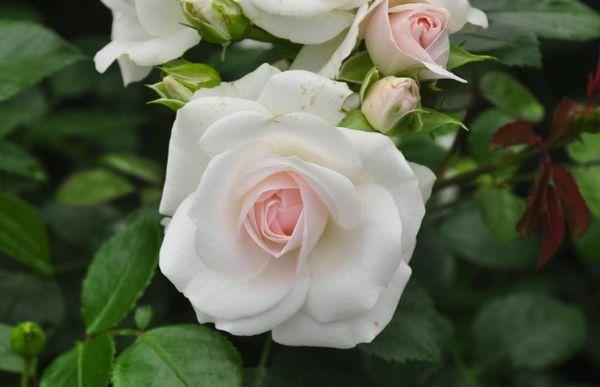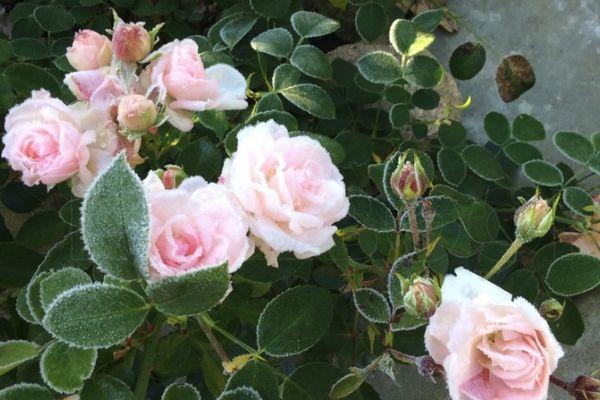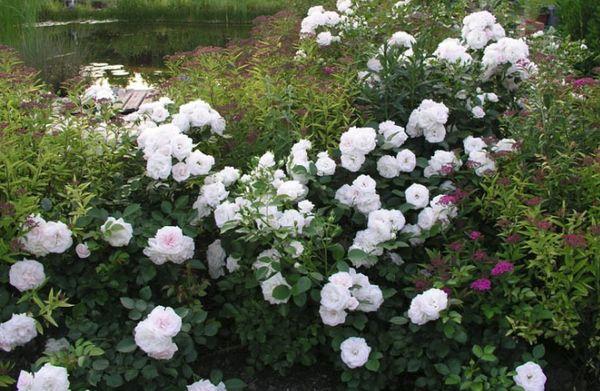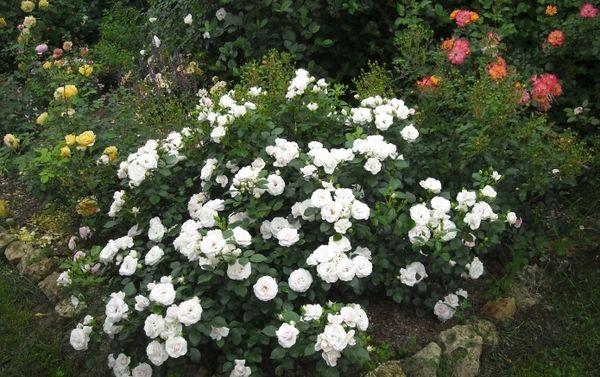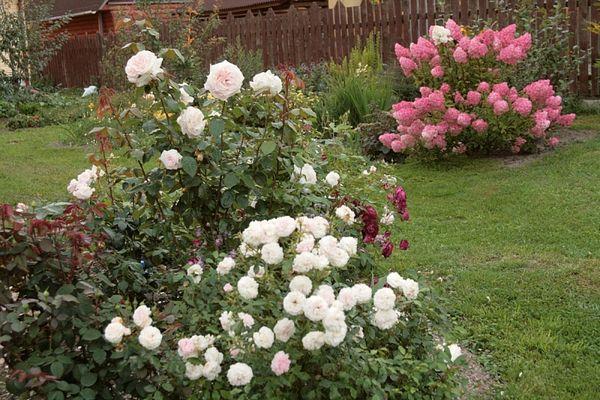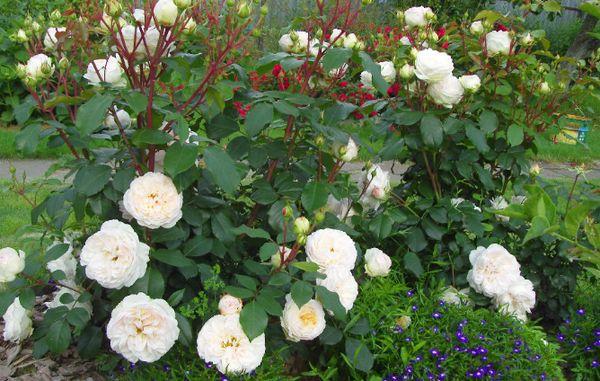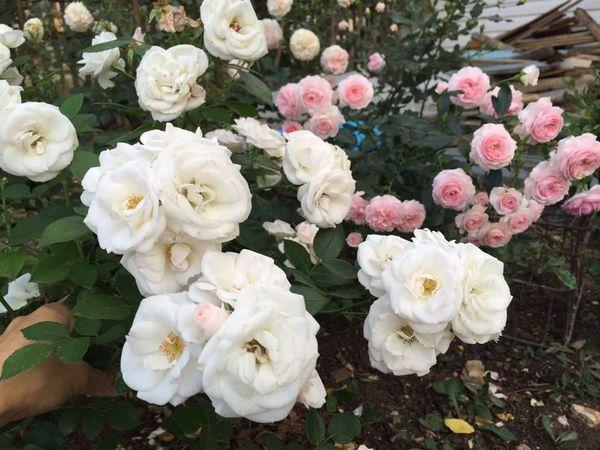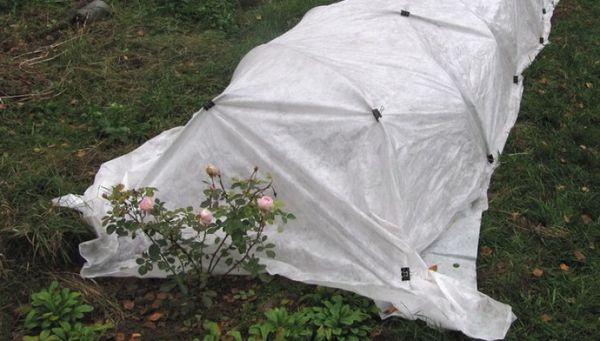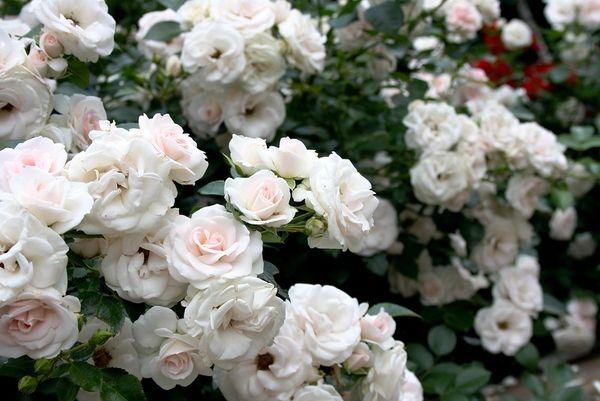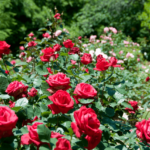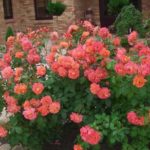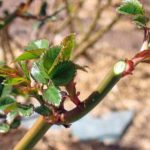Rose Aspirin is one of the most beautiful ornamental plant varieties. It is universal and has a lot of advantages, which is why it has become widespread. These flowers become a real decoration of the garden plot. Many gardeners choose this variety because of its vitality, resistance to damping off and a number of other advantages.
- Variety selection
- Difference from other varieties
- Advantages and disadvantages: is it worth growing on the plot?
- Advantages of using it in landscape design
- Biological nuances
- Bush size
- Buds and flowering
- Aroma
- Winter hardiness and disease resistance
- Conditions for growing crops
- Temperature and humidity
- Illumination
- Required soil composition
- How to plant a rose on a plot
- Disembarkation dates
- Technological process of planting work
- Flower care
- Irrigation and fertilization
- Removing faded inflorescences
- Formative pruning
- Loosening and mulching the soil
- Disease and pest control
- Shelter for the winter
- Rose propagation methods
- Basic mistakes when growing
- Reviews from gardeners about the aspirin variety
Variety selection
Floribunda means “abundantly blooming”. At the beginning of the 20th century, the first hybrid variety with this name was bred in Denmark. It has absorbed the best qualities of the mother varieties.
A group of decorative and exquisite roses bred from the first hybrid received a similar name. It also includes Aspirin roses.
The group also includes other species with similar varietal characteristics:
- abundance of flowers;
- disease resistance;
- good winter hardiness;
- shade tolerance.
The Aspirin species belongs to the ground cover varieties. These roses are most often grown as a bush, but in some cases they are also grown as a standard tree.
Difference from other varieties
Rose Aspirin is different from other varieties. Like other varieties of the Floribunda group, it has constant rather than wave-like flowering. Flowers are able to change shade depending on the ambient temperature (from white to pink). In addition, such roses do not produce wild shoots.
Advantages and disadvantages: is it worth growing on the plot?
The Aspirin variety has a number of obvious advantages and almost no disadvantages. Among the positive qualities, gardeners note the following:
- Compactness.
- Frost resistance.
- Continuous long flowering.
- Highly decorative bushes.
- Relatively easy to care for.
- Resistance to diseases and pest damage.
The disadvantages include minor problems with loosening the soil around the bush. It will be difficult due to its covering with shoots. Overall, this plant is a good choice for a gardener.
Advantages of using it in landscape design
Due to the compactness of the bushes and the beauty of the flowers, the plants are used in landscape design. Plants look good both in a small summer cottage and in larger areas. Roses can be planted in a group or individually.
Due to the fact that the plant can form a covering of shoots, this variety is often planted in places where rocky areas need to be decorated. Roses are used to decorate borders, paths, and in the form of hedges.
Biological nuances
The biological characteristics of the variety are the parameters of the plant, as well as its ability to resist diseases and insect pests, the winter hardiness of the species, and its ease of care. These indicators ultimately determine the popularity of the variety.
Bush size
The bush is compact, its size is from 50 to 80 cm. It is the same in height. The leaves are glossy dark green. The bush is completely covered with them.
Buds and flowering
Each flower consists of 45-50 petals. One inflorescence contains 10-12 small buds. The size of each of them is 4-5 cm in diameter. The Aspirin rose blooms from June to October. This happens in all buds at the same time. At the very beginning of flowering, the middle of the flower is pink, and the flower itself is snow-white. They are also capable of changing color when the temperature drops - in this case they turn completely pink.
The plant has the ability to self-purify. The petals fall from the flower before they completely darken and dry. Therefore, the bushes have a neat appearance, there are no wrinkled or rotten flowers. After the faded flowers are shed, new ones appear on the branches.
Aroma
Roses of this variety have a light, pleasant aroma. Even with abundant flowering, the smell will not be cloying and intrusive.
Winter hardiness and disease resistance
The variety tolerates temperature drops down to -27 degrees, which is why it has become widespread in central Russia. Even in frosty winters, the plant needs light shelter. Roses of the Aspirin variety have high disease resistance. In rare cases, bushes may become infected with fungus.
Conditions for growing crops
By following some simple rules, the gardener will end up with a healthy plant, ready for abundant flowering. The good thing about this variety is that it does not require any specific care efforts. Starting from the 2nd year of growth in open ground, the bushes do not need weeding, since the lower shoots are lowered to the ground. They form a natural covering and thereby inhibit the growth of weeds.
Temperature and humidity
Cold air may stagnate in lowlands. If you plant roses in such a place, they will get sick and grow poorly. It is preferable to plant rose seedlings on a small hill where there is good air circulation.
Illumination
Rose aspirin prefers areas with good lighting, but it will also grow quite successfully in shaded areas. If the plant does not get enough light, the buds take on a pink tint.
Required soil composition
These plants grow well on black soil and loam. The best place for roses to grow is on a slight hill. In this case, water will not stagnate in the soil. Groundwater should flow at a distance of 1 m from the surface.
A good option for planting would be soil with slight acidity (pH level should be from 6 to 6.5). Excessive acidity is not suitable. In this case, carry out liming of land or sprinkling it with wood ash.
If desired, the gardener can additionally prepare the soil for planting such roses.The mixture consists of the following components:
- fertile soil;
- sand;
- turf;
- peat;
- sand;
- humus.
All components are taken in equal quantities, except for fertile soil. There should be twice as much.
How to plant a rose on a plot
It is not difficult to plant such a plant in your summer cottage. It is enough to choose a suitable propagation method, a planting site taking into account the necessary conditions and prepare the soil.
Disembarkation dates
In areas where winters are cold, young seedlings should be planted in the spring so that they have time to get stronger and adapt to winter. This should be done when the soil is warmed to + 12 degrees. In regions with warm climates, the plant is successfully planted in the fall.
Technological process of planting work
The landing goes like this:
- Prepare holes measuring 50x50 cm
- Drainage (gravel, crushed stone) is poured onto the bottom.
- Place the prepared soil mixture.
- Moisten the soil.
- After the water has been absorbed, the seedling is carefully placed. The root collar should be 2-3 cm in the ground.
- Cover the roots with soil.
- Water the soil again.
- The earth is lightly compacted.
Before planting, you need to dip the roots of the plants in water for better rooting in the soil.
Flower care
Aspirin roses require intensive care during the growth period of young seedlings. In the future there will be less hassle with the plant.
Irrigation and fertilization
Roses should be watered as the top layer of soil dries out. It is preferable to do this in the morning or evening to avoid evaporation of water in direct sunlight. Excessive watering can lead to root rot.
During the growing season, the bushes need to be fed at least 4 times. First, this is done in the spring before the buds appear. You can use any means for flowering plants.
They must contain:
- Nitrogen.
- Potassium.
- Phosphorus.
It is important that the ratio is 1:1:2.
- The second time, roses are fertilized 30 days after the first.
- The third time the bushes are fertilized immediately after the first flowering. The same drugs are used.
- The last time this is done is immediately before wintering, when the plant has completely bloomed. In this case, fertilizers with a high potassium content are used. This will stimulate the growth of new shoots next spring.
Removing faded inflorescences
The peculiarity of this variety is that the plant sheds its wilted petals before they darken and dry out. After flowering is complete, the peduncle is cut off to form a new one.
Formative pruning
The main pruning is carried out in the spring, removing damaged branches. The goal of the autumn procedure is to shorten the height of the bush and eliminate the affected shoots, if any. You need to cut it by 10-12 cm. Once every 4-5 years, large-scale pruning of Aspirin roses is carried out in order to rejuvenate the bushes. To do this, the oldest stems are removed.
Loosening and mulching the soil
Before placing the seedling in open ground, you need to loosen the soil well. In the future, the grown plant will cover the ground with strong shoots, forming a kind of carpet, and it will become more difficult to remove the emerging weeds. You can treat the ground around the bush with suitable chemicals. Mulching the soil with peat, hay, and sawdust will only be needed at first, while the plant is gaining strength.
Disease and pest control
With high disease resistance, the Aspirin rose can still be affected by powdery mildew or black spot. This usually happens if the care conditions were violated during the growth period of the plant.A good remedy is Fitosporin. It is used for the prevention and treatment of diseases.
Aspirin roses are rarely attacked by insects. If this happens, the plants are treated with the following insecticides:
- Fitoverm.
- Actellik.
- Inta-Vir.
- Bitoxibacillin.
Shelter for the winter
In areas where winter is cold, rose bushes should be covered with spruce branches. Some gardeners argue that in warm regions, snow cover will be sufficient.
However, despite their frost resistance, it is still better to cover the bushes.
Rose propagation methods
Common method propagation of shrub and climbing rose species - This is propagation by layering. It is used when the plant has strong shoots.
You can also use the method of dividing the bush. This procedure is carried out in the spring, when the soil has completely thawed. Usually this is the end of April. A strong bush is dug up and divided into parts with pruning shears so that each of them has roots and several strong shoots.
Roses from the Floribunda group are often propagated using cuttings. Choose a strong young shoot, cutting it off near the leaf bud. Root growth stimulants are used. After their appearance, the shoot is transplanted into the ground.
Basic mistakes when growing
A mistake made by inexperienced summer residents is shallow watering. It is difficult to water the plant at the root because of the spread out shoots, so gardeners often water with a hose directly onto the bush. On sunny days this can lead to burns on the bushes.
For proper watering, you need to make a groove around the perimeter of the bush and apply water there. If roses grow in a group, then such grooves are made along the hedge. In autumn, the amount of water when watering roses is halved. The Aspirin variety is an exception.It must be watered abundantly until the end of flowering.
Reviews from gardeners about the aspirin variety
Svetlana Vasilievna, 52 years old, Astrakhan
I planted aspirin roses at my dacha. Plants delight with lush flowering. They make a wonderful hedge, which is beautiful due to its green, dense foliage. And during the flowering period it delights everyone.
Mikhail Romanovich, 57 years old, Ryazan
My wife and I planted Aspirin roses on our plot for the first time 3 years ago. The roses have taken root well, bloom constantly in the summer, and look very beautiful. The flowers are not very large, but there are a lot of them and looking at such bushes is a real pleasure. It blooms from early summer almost until frost.

